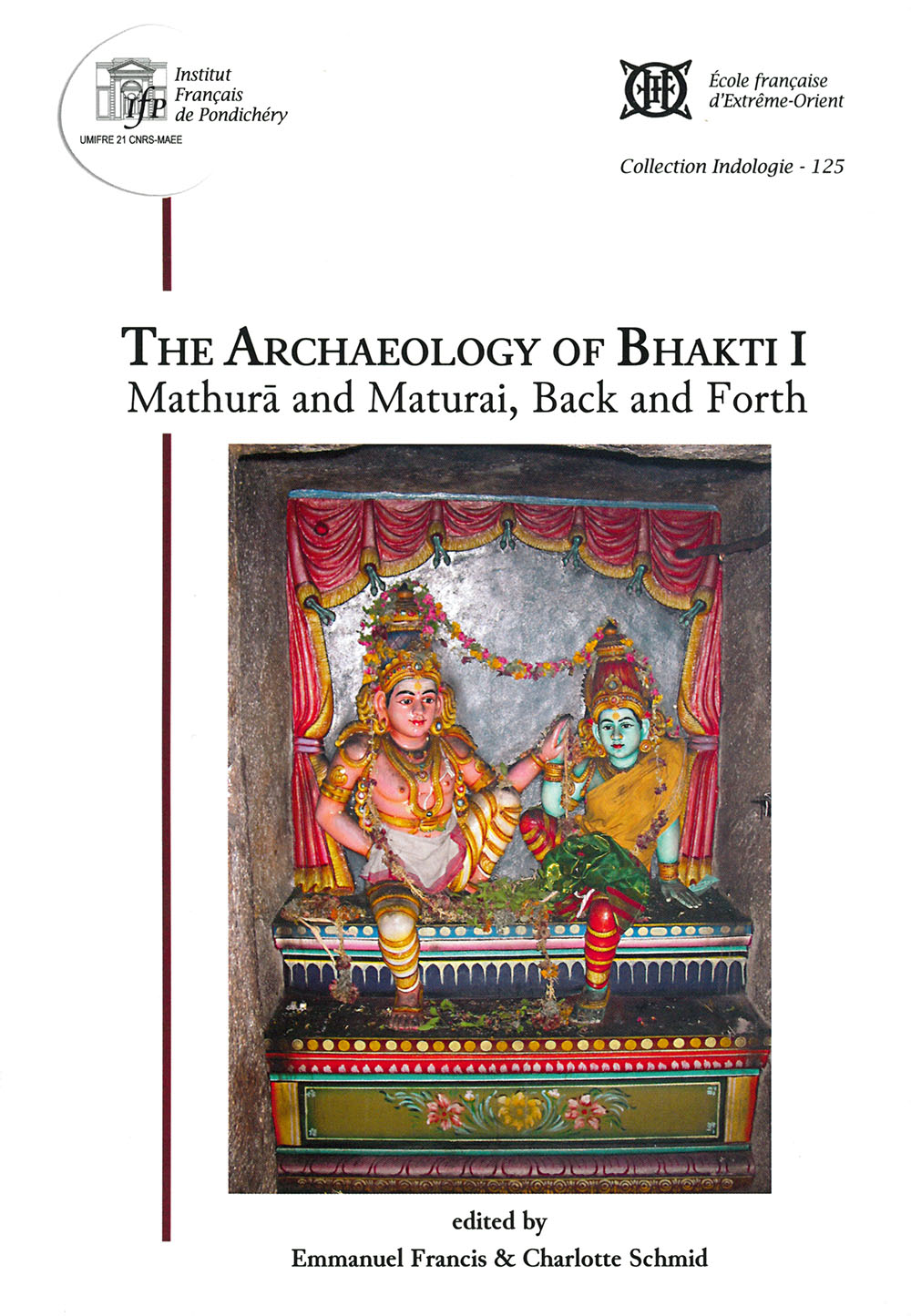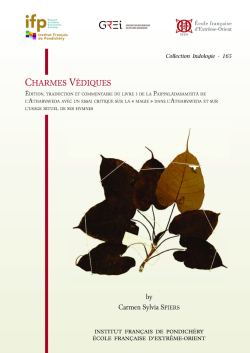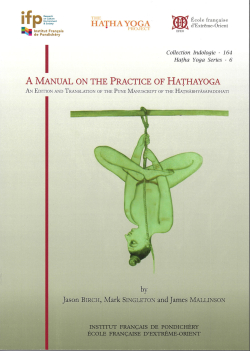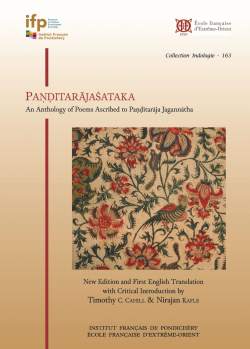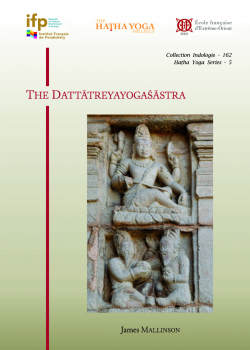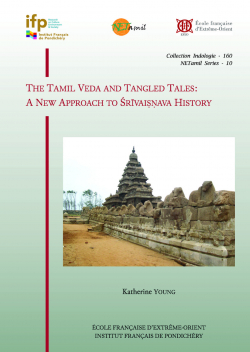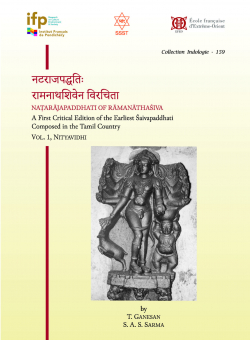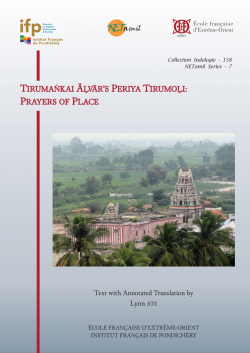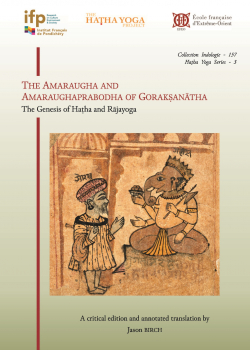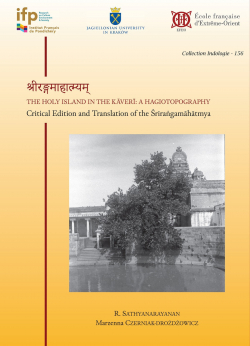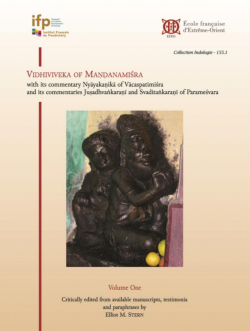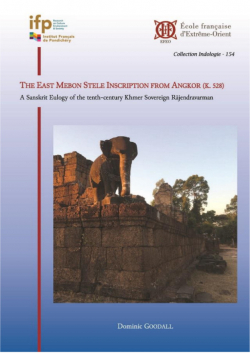The catalog of EFEO Publications includes works on a wide range of disciplines in the humanities and social sciences (archaeology, history, anthropology, literature, philology, etc.), centered on Asia, from India to Japan.
These publications address both specialists, and a wider public interested in Asian civilizations and societies.
The Archaeology of Bhakti I
Mathurā and Maturai, Back and Forth
Collection : Collection Indologie
Collection's number: 125
Editor: Schmid (Charlotte), Francis (Emmanuel)
Edition: EFEO, Institut français de Pondichéry (IFP)
Publication date: 2014
Status : Available
43,00 €
ISBN-13 : 9782855391397
ISSN : 0073-8352
Width : 17 cm
Height : 24,5 cm
Weight : 0,85 kg
Number of pages : 366
Distributor : EFEO Pondichéry Contact : shanti@efeo-pondicherry.org, distributeur online : scholarswithoutborders@gmail.com, distributeur Chennai : jibh.rkc@gmail.com
Geography : India
Language : English
Place : Pondichéry
Support : Papier
Abstract
This volume—the outcome of a workshop-cum-conference that took place from 1st to 12th August 2011 in the Pondicherry Centre of the École française d’Extrême-Orient,—is an invitation to practise the “archaeology of Bhakti” with the help of both textual and non-textual sources. Bhakti, broadly defined as an attitude, a strategy or a style of devotion—one that may be intellectual, emotional or rooted in acts of worship—towards God or the Divine, manifests itself through the personal voices of devotees as well as through the collective effort that constitutes the building of a temple. The “archaeology of Bhakti” aims at correlating different realms of representation, such as texts and images, in order to illuminate the elusive, pan-Indian phenomenon of Bhakti. The focus is on sources, agencies and layers. A special attention is given to inscriptions, which belong both to the realm of artefacts and to that of texts, and which help to distinguish royal demonstrations of Bhakti from local manifestations. In the realm of textual sources, “archaeology” is put to work to identify how literary conventions and concepts have formed and been incorporated, layer upon layer, into a given composition. After an introduction by the editors about the complexities of the concept and practices of Bhakti in the Indian world, essays by nine scholars explore the phenomena of Bhakti and their chronology from different perspectives (textual, epigraphical, archaeological, iconographical). In the course of these explorations, the reader is transported from the North to the South of the subcontinent, back and forth between Mathurā and Maturai.
Table of contents
Foreword by Emmanuel Francis & Charlotte Schmid
Conventions
Introduction
Towards an Archaeology of Bhakti by Emmanuel Francis & Charlotte Schmid
Contributors
List of Figures
General Index Author
Index
Notes
You can also order this title with our Pondicherry center at the following address:
shanti@efeo-pondicherry.org
Or with the French Institute of Pondicherry at the following address:
library@ifpindia.org
Orders to India must be placed with our center in Pondicherry or the French Institute of Pondicherry.
About the editor
Schmid (Charlotte)
Archaeology of the Indian world
The scientific life of Charlotte Schmid is marked by her stays in India: two years in North India (1991-1993) were followed by an assignment, in September 1999, in the centre of Pondicherry (EFEO), Tamil Nadu, for four years. These two periods of intensive work in India articulate a research led between two spaces of field-work, the North and the South of the subcontinent.
After an attempt to define a colonial culture, the Bactrian Greece, based on the material from Aï Khanum -the most important Greek colony excavated in Central Asia- and classical studies (Greek, Latin, École du Louvre), the discovery of Sanskrit and the reading of La grande route de Bactres à Taxila of Alfred Foucher, pointed to the necessity of field-work.
Firstly, following the road of India to an accessible country, which allows studying the relationships between two types of corpus, texts and archaeological material taken in a broad sense, Charlotte Schmid worked on the first known figures of a major Hindu deity of bhakti, Kṛṣṇa in Mathurā. Today an Indian city of medium size of which Kṛṣṇa-devoted cults have forged cultural identity, Mathurā, with its mosque of the 17th c. and its numerous Jain, Buddhist and Brahmanical remains dated from the 2d c. BC, is loaded with myth. A doctoral thesis supervised by Gérard Fussman and focusing on a confrontation between the archaeological evidence and the texts which made of Kṛṣṇa “the” child of Mathurā, was followed by a research on the iconography and the epigraphy of the Gupta period, as it is accounted for in Le don de voir.
Secondly, the posting in Pondicherry led C. Schmid to study the appearance of the deities of bhakti in the Tamil country. The issue of the relationship between texts and archaeology is conducted in "another" region and on better documented periods of time. The EFEO centre gave access to new fields of research. The work with traditional pundits was not the least of them and C. Schmid started to also investigate Tamil data.
Posted in Paris since 2003, she pursues researches on the figures of Hinduism in Ancient India, fed by lively exchanges with the Indian scholars of the Centre of Pondichéry and by archaeological material (monuments, sculptures, inscriptions). Temples in situ, provided with dozens of inscriptions and sculptures, established between the 6th and the 12th c., as well as the texts, often devotional, connected to them, constitute the basis of, for instance, Sur le chemin de Kṛṣṇa : la flûte et ses voies and La Bhakti d’une reine.
Her seminars at the École pratique des hautes études, her role as editor in chief of Arts Asiatiques and member of the editorial board of the Bulletin de l’École française d’Extrême-Orient, her involvement in the Corpus des Inscriptions Khmères (CIK) provide opportunity for many exchanges with students and colleagues, which, finally, made of Southeast Asia one horizon of the work of C. Schmid.
